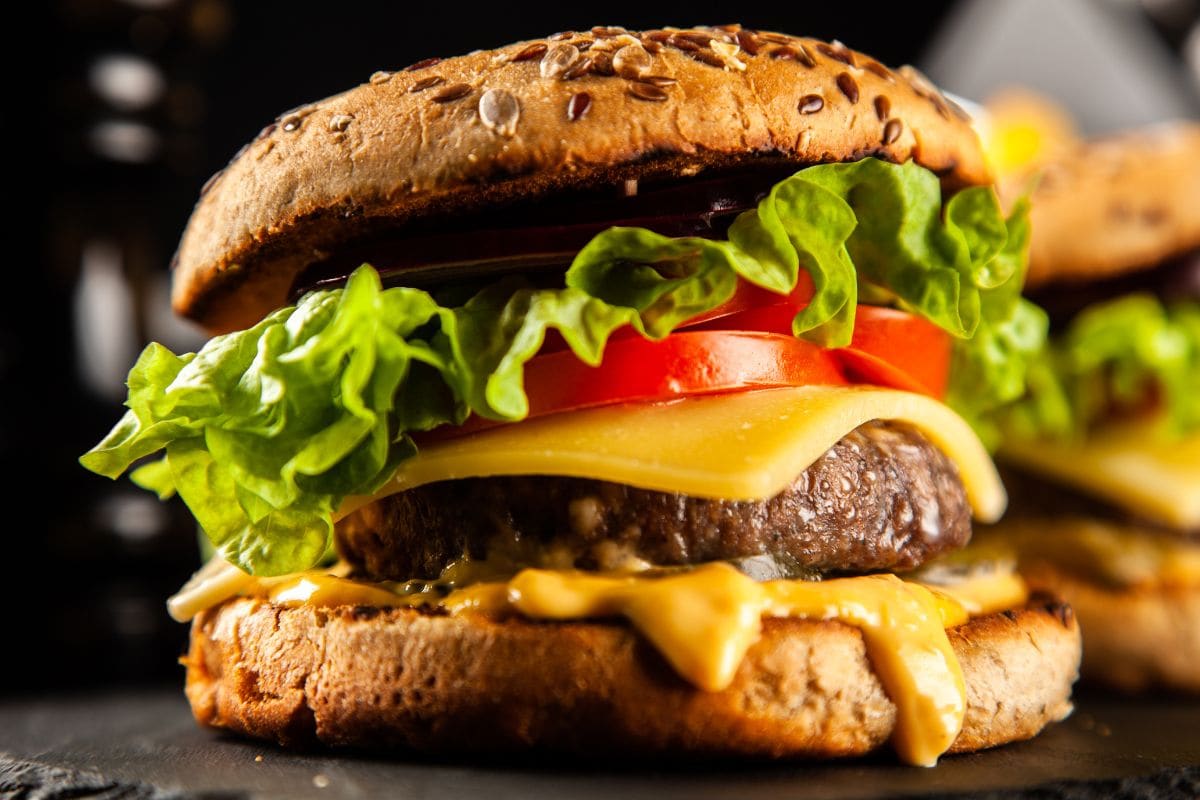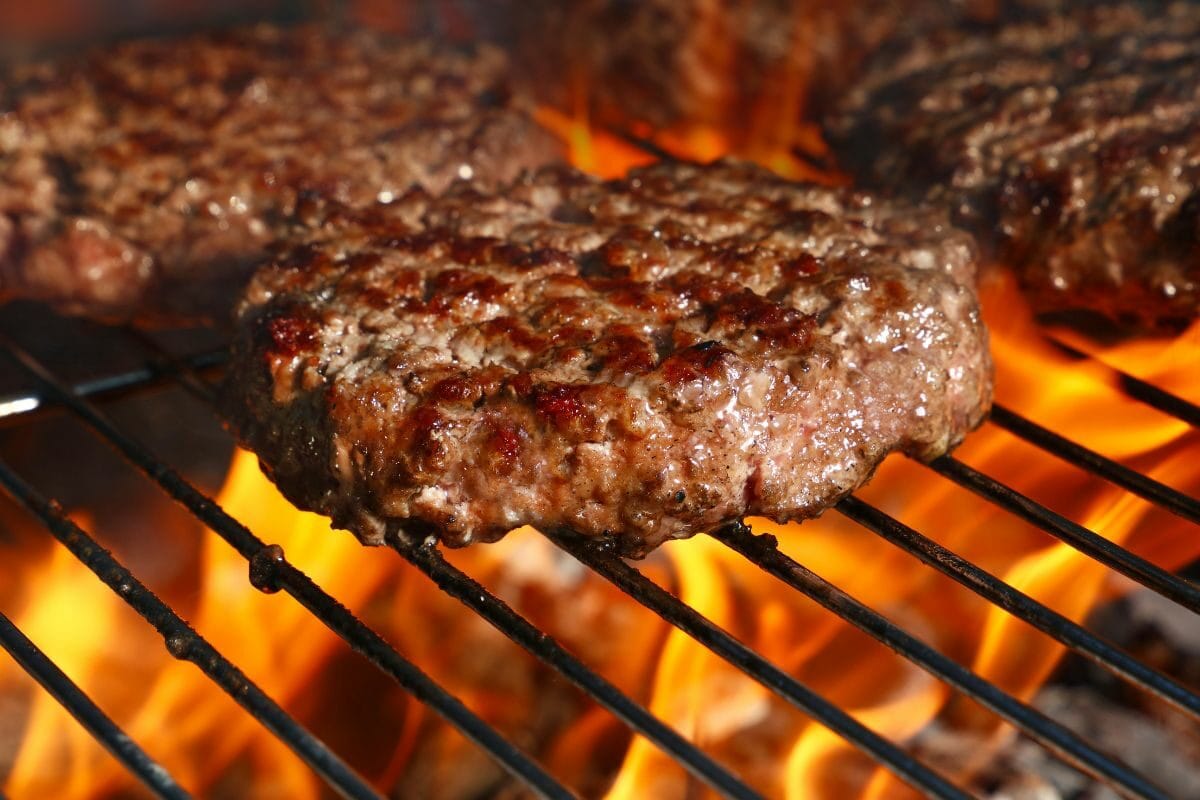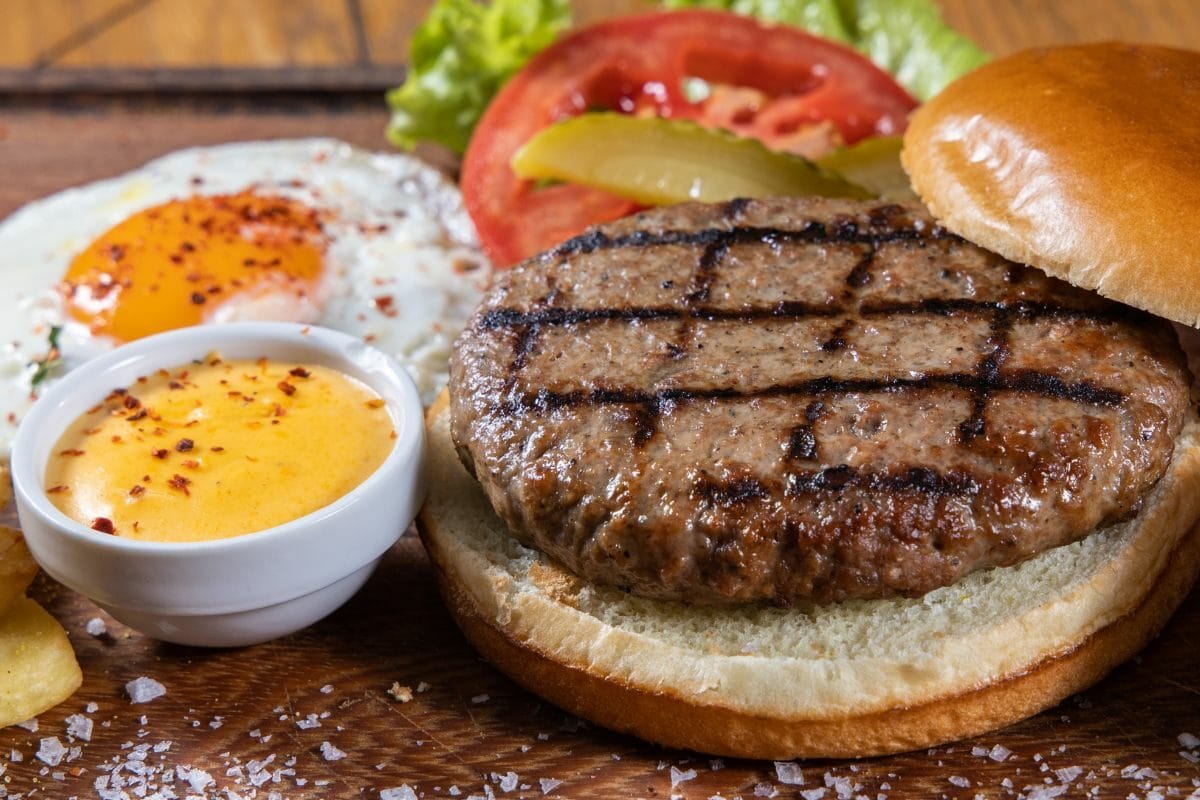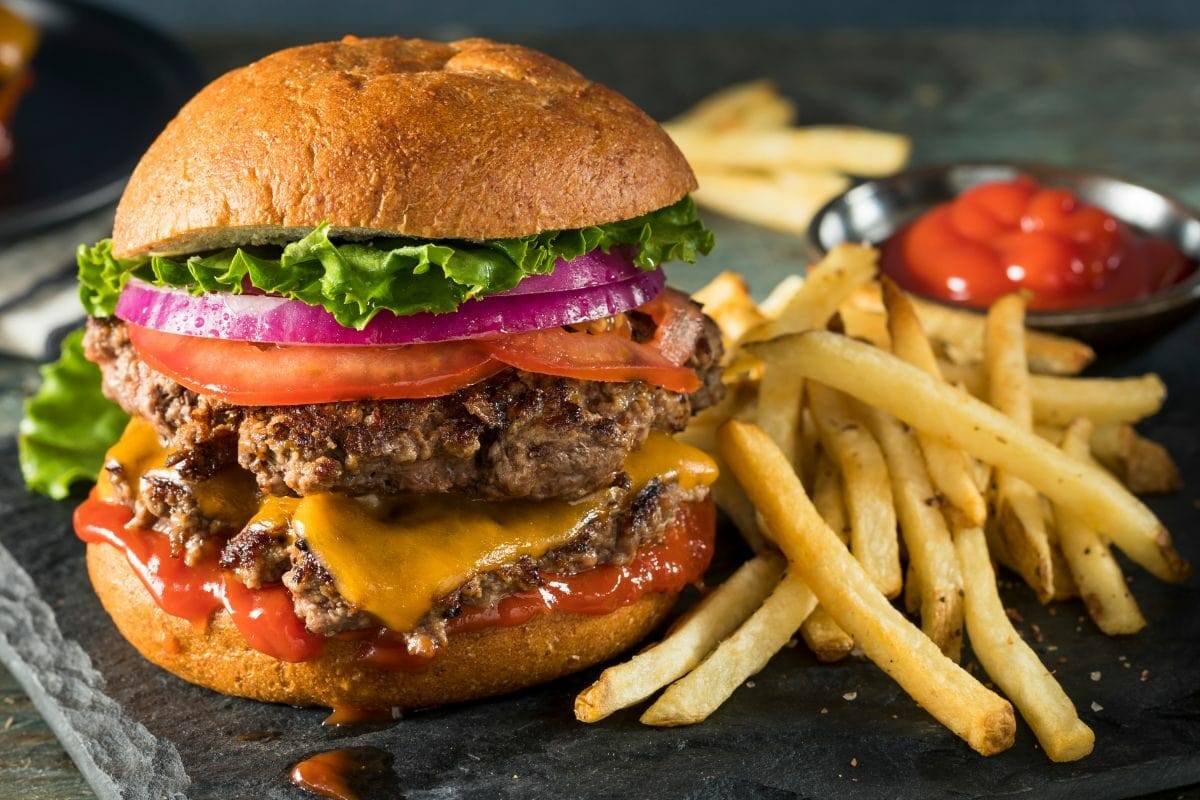You can prepare a delicious burger in several ways. But regardless of which method you choose, the meat must be cooked to the ideal internal temperature.
According to the USDA, you should cook burgers to 160 degrees to guarantee food safety. That said, you can safely cook your tasty burgers to lower internal temperatures as long as you follow the proper safety guidelines.
As an experienced chef, I’ve cooked burgers for countless hungry customers. Some wanted their patties cooked well, while others preferred medium-rare meat. Today, I’ll show you the temperature guide I use when grilling burgers, so you get consistently juicy hamburgers. Let’s get started

The USDA has temperature guidelines for cooking meat to help people cook at safe temperatures. They recommend cooking ground meat to an internal temperature of 160°F to lower the risk of food poisoning.
Cooking to this temperature ensures that the meat is safe to consume and that dangerous sickness-causing bacteria are eliminated.
Even though 160 degrees is the recommended temperature for well-done burgers, many people prefer rare to medium burgers, which are cooked to an internal temperature lower than 160 degrees.
Fortunately, You can enjoy your medium rare or rare hamburgers if you use premium beef cuts from one cattle.
However, if you use cheaper ground beef, cooking it to the recommended 160-degree temperature is safer. This is because cheaper ground meat typically comes from different cattle, which increases the risk of bacteria. Now, let’s look at the hamburger patties’ temperature guidelines for every doneness level.
Here are a few tips to remember when grilling your hamburger:

Since the source of ground beef might come from several different animals, it often carries a higher risk of bacterial contamination than most other kinds of beef.
Exposure to bacteria can cause food poisoning symptoms such as vomiting, fever, stomach cramps, diarrhea, etc. For this reason, it’s vital to grind premium beef cut from one animal. Let’s check out some helpful food handling safety advice for using ground beef:
By taking these precautions, you can reduce the likelihood that food-borne illnesses will affect you and your family.
First things first, a burger should always be seasoned before cooking. Hamburger meat doesn’t have a lot of flavors on its own, so a dash of salt and pepper goes a long way!
Additionally, I advise grilling your burger because it is the most flavorful way to prepare the meat. My preferred method of cooking burgers is charcoal because the flavor of the charcoal combined with the meat is delicious.
That said, you can’t go wrong with a pellet grill. The sear function on these cookers is perfect for searing your juicy patty. Generally, burgers should be cooked at a temperature between medium-high heat and high heat of 375 to 400 degrees.
If you don’t yet have a grill, your pan will do, but to bring out the flavors of the meat, you’ll need to season the burger a little more.
Speaking of high-quality meat, it’s important to pick the right type of meat for your burgers. I advise choosing one of these three varieties of ground beef.

Store the ground meat in the fridge until you’re ready to make the patties. Next, wet your hands with cold water. Doing this makes it easier to form the patties without the meat sticking to your hands. Roll the meat together and press until it’s your preferred thickness. Lastly, using one finger, press the center of the formed patty to prevent the burgers from puffing up while they cook.
Depending on the thickness of the burger, the cooking temperature, and your personal preference, you should cook the meat between 2 and 5 minutes per side. Naturally, thin patties will finish cooking more quickly (in as little as 1 to 2 minutes per side), whereas extra-thick ones would require a little more time.
You can check your burger doneness with an instant read thermometer or by feeling the meat. Of course, using the thermometer to check the doneness is the most reliable and effective method, but you could get similar results by feeling the patties.
When using a meat thermometer, the correct way to check the burger’s internal temperature is by inserting the thermometer through the side until you reach the center. If you insert the thermometer through the top, you could easily miss the meat’s center.
Moreover, if you’re using a regular food thermometer, leave it in the burger for roughly 10 seconds for a more accurate reading.
Using your hands to check the burger doneness of your patties requires more experience and finesse. Check out how mushy the burger feels by gently pressing the center. A rare burger will have a soft texture, while a medium burger will feel firmer. Generally, your burger will feel firmer the more cooked it is.
You can store your delicious hamburgers in a refrigerator or freezer. After you buy the ground beef or hamburger, store it in the refrigerator if you’ll be using it shortly. If refrigerated, use the meat within one or two days and keep the fridge at 40 °F or lower.
If you won’t be using the meat within two days, wrap it in heavy-duty plastic wrap, or plastic bags and place it in the freezer. The meat should last for about 4 months in the freezer.
Bear in mind that cooked burgers will last in your fridge for three to four days and four months in the freezer. Ensure you store the leftovers in a moisture proof container and label them for long-lasting results.

After cooking burgers, you should allow them to rest for about ten minutes. This allows for what is known as carryover cooking, where the meat will continue to cook even after you’ve removed it from the heat source. For more flavorful results, I recommend creating a tent with aluminum foil so the meat’s juices can baste and permeate through the entire surface.
You can get away with eating burgers with a pinkish tinge as long as you practice the safety tips earlier discussed. If you fail to follow these precautions, you may be exposed to foodborne illnesses.
What constitutes a ‘perfect burger’ is different for everyone. I personally prefer my burgers well-done, but others enjoy medium rare or even rare burgers. Whatever your preference is, ensure you follow the guide, so you always get tasty results. Don’t forget my safety tips, and always keep a meat thermometer nearby; you’ll need it.